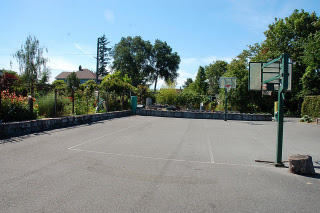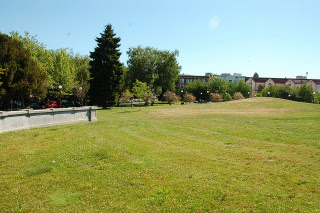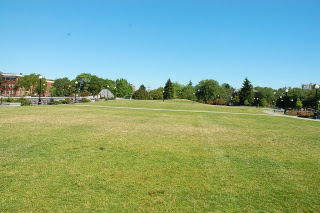Today studio class drove up to Perkins, Oklahoma to take photos for a photo essay. It is going to be an in house photo essay that we will use while working on a comprehensive plan. I am working with the planning department this semester in studio as part of OU's Landscape Architecture curriculum. I was asked what do you want to do with your landscape architecture degree when you graduate?
Bradner Gardens is a space of cooperation. Architect students, volunteers, the City of Seattle and Landscape Architects came together to design a space that makes many in the neighborhood happy. It is easy to spot a garden that is loved. They don't lie! It was blazing hot the day I visited and there were still children playing in the shade of the gazebo. They said their parents were close by working in the gardens, I believed them because they were so young. It is not the lack of weeds in a garden that speaks of love. It is the attention to detail, and the layering of detail. Especially in a volunteer garden.
After a lengthy explanation that rambled on about the environment, people and outdoor public space we moved on. It was when I was describing what I felt was a successful design that I realized a better way to describe what I want to do. I do not care to design glitzy projects. It is not important for me to be in the forefront of landscape architecture theory. I find satisfaction in a design that has many limiting parameters and numerous program requirements. Then add my own person responsibilities to the environment and address the social issues of the site. In the end, if the design is aesthetically pleasing, environmentally responsible and exceeds the needs of many, I have a successful project.
Bradner Gardens has layers issues that benefit the community. The simple design of the structures is pleasant and personal. It does not have a crafty-low-budget feel. It is tastefully designed with the budget in mind. There are components of the gardens that I would expect from such a team of designers and volunteers, like the water catchment device and storage, wetland preservation and water runoff control. It is the basketball court that I find genius. What better way to bring in another social dimension to the garden?
I really think Bradner Gardens is a successful little garden and park. It is aesthetically pleasing. It doesn't just nod to the environment, it actually has teaching components. It reaches out to multiple and diverse groups of people. Sometimes a budget can be the most limiting factor in a design. I think that if it was in this design, which I suspect it was, the design teams did outstanding.








































































